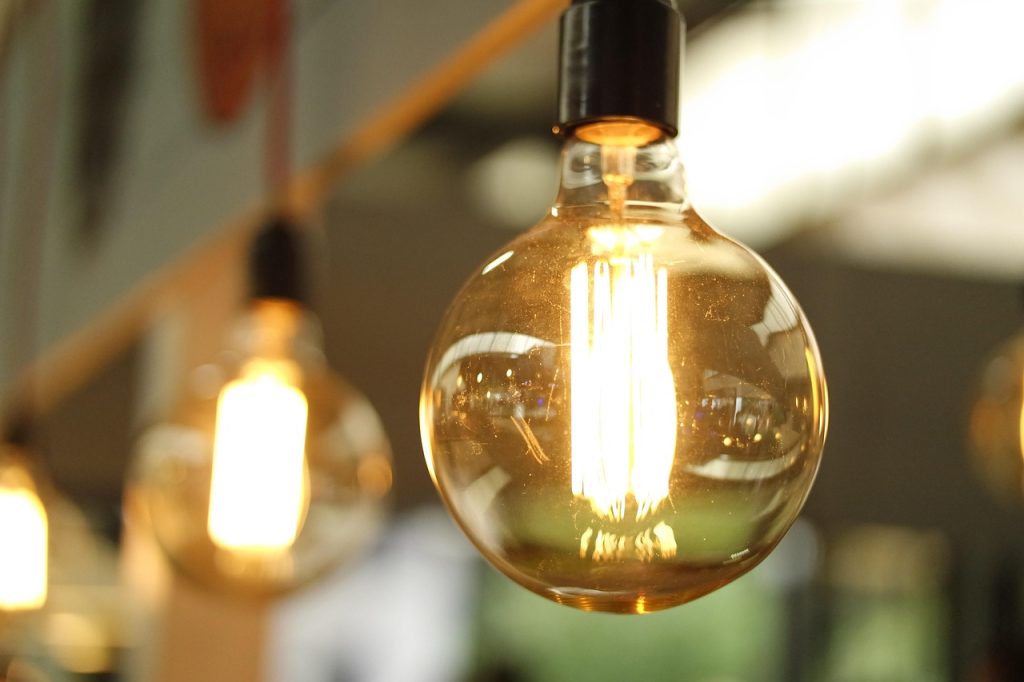With rising utility costs and growing concerns about climate change, making your home more energy-efficient is one of the best ways to reduce your carbon footprint and save money. While major home upgrades like solar panels or new windows can be expensive and time-consuming, there are plenty of DIY energy-efficient fixes that can deliver quick results. These upgrades are not only easy to implement but also provide significant savings on your energy bills in the long run.
In this post, we’ll explore some simple, cost-effective ways to improve your home’s energy efficiency, lower your utility costs, and contribute to a healthier planet—all without breaking the bank.
1. Seal Air Leaks
One of the most effective and affordable ways to improve your home’s energy efficiency is to seal gaps or cracks where air can escape. Leaky windows, doors, and vents can let heated or cooled air escape, forcing your HVAC system to work harder and consume more energy.
How to Do It:
- Windows and Doors: Use weatherstripping or caulk around windows and doors to prevent drafts. You can also add door sweeps to the bottom of doors to block air leakage.
- Vents and Ducts: Inspect your vents and ducts for any gaps and seal them with foil tape.
The Payoff:
Sealing air leaks can reduce heating and cooling costs by up to 20%. By keeping air where it should be, your HVAC system works more efficiently, leading to immediate savings on your energy bill.
2. Insulate Your Attic and Walls
Proper insulation is a key factor in maintaining a comfortable temperature in your home, preventing warm air from escaping in the winter and keeping cool air inside during the summer. Insulating your attic and walls also helps reduce the workload on your HVAC system.
How to Do It:
- Attic Insulation: Add extra insulation to your attic floor using fiberglass batts, spray foam, or blown-in insulation. Make sure the insulation covers all exposed areas.
- Wall Insulation: If your walls are not insulated, you can add insulation by drilling small holes and using blown-in cellulose or foam insulation. This process is best performed by professionals, but it’s well worth the cost.
The Payoff:
The DOE estimates that properly insulating your home can save you around 20% on your heating and cooling bills.
3. Upgrade Your Light Bulbs
Switching to energy-efficient light bulbs is one of the easiest ways to reduce your energy consumption. LED and CFL bulbs use a fraction of the energy of traditional incandescent bulbs and last much longer.
How to Do It:
- Switch to LED Bulbs: Replace incandescent bulbs with LED bulbs in frequently used fixtures like ceiling lights, lamps, and outdoor lighting.
Install Motion Sensors: For lights in hallways, bathrooms, or outdoor spaces, install motion sensors to ensure that lights are only on when needed.
The Payoff:
Switching to LED bulbs can cut your lighting energy use by 80-90%.
4. Use Programmable Thermostats
A programmable thermostat allows you to set your home’s temperature according to your schedule, ensuring that you’re not heating or cooling an empty house. By automatically adjusting the temperature when you’re away or asleep, you can significantly reduce energy waste.
How to Do It:
- Install a Programmable Thermostat: Most thermostats can be easily replaced with a programmable model. Set the temperature to automatically adjust to a lower setting when you’re at work or asleep, and return to a comfortable level just before you come home or wake up.
- Smart Thermostats: If you want an added level of control, consider investing in a smart thermostat. These devices can be controlled remotely via your smartphone, allowing you to make adjustments while you’re away from home.
The Payoff:
According to the DOE, using a programmable thermostat can save up to 10% per year on heating and cooling costs by reducing energy use during periods when you’re not at home.
5. Install Low-Flow Water Fixtures
Reducing water usage not only helps conserve a valuable resource, but it also reduces the energy required to heat water in your home. Installing low-flow showerheads, faucets, and toilets can significantly reduce your water and energy bills.
How to Do It:
- Low-Flow Showerheads: Replace your existing showerhead with a low-flow model, which uses less water while maintaining pressure.
Low-Flow Faucets: Install aerators on kitchen and bathroom faucets to reduce water flow without sacrificing performance. - Water-Efficient Toilets: If your toilet uses more than 1.6 gallons per flush, consider replacing it with a high-efficiency model that uses 1.28 gallons or less.
The Payoff:
Low-flow fixtures can reduce water usage by up to 50%.
6. Upgrade to Energy-Efficient Appliances
While upgrading appliances may seem like a larger investment, it’s one of the most effective ways to cut down on your home’s energy consumption over time. Energy-efficient appliances use less electricity or gas to perform the same tasks, reducing your overall utility bills.
How to Do It:
- Replace Old Appliances: If your refrigerator, washer, dryer, or dishwasher is over 10 years old, consider replacing it with an ENERGY STAR-certified model. These appliances are designed to use less energy without sacrificing performance.
- Maintain Appliances: Keep existing appliances in good working condition by performing regular maintenance. For example, clean the condenser coils on your refrigerator and replace air filters in your HVAC system.
The Payoff:
ENERGY STAR-certified appliances use 10-40% less energy than their non-efficient counterparts.
7. Apply Reflective Window Film or Shades
Windows are a major source of heat loss in the winter and heat gain in the summer. Installing reflective window film or energy-efficient shades can help block out heat during the summer and retain warmth during the winter, making your home more comfortable year-round.
How to Do It:
- Window Film: Apply reflective window film to reduce solar heat gain and improve insulation. This film can be easily applied to your windows without professional help.
- Thermal Curtains or Shades: Install insulated curtains or shades that can be drawn during extreme temperatures.
The Payoff:
Reflective window films and thermal curtains can reduce your heating and cooling costs by up to 25%.
8. Use a Clothesline or Drying Rack
Instead of using your dryer for every load of laundry, consider using a clothesline or drying rack for clothes that can air-dry. This simple change reduces the energy required to dry clothes, lowering your electricity bills.
How to Do It:
- Install a Clothesline: If you have outdoor space, install a clothesline to dry your clothes naturally. If you’re limited by space, use a retractable indoor clothesline or a drying rack.
- Hang Clothes to Dry: Simply hang clothes to dry once they come out of the washer. The sun and wind will help items dry faster. Lightweight items will dry quicker than bulky ones.
The Payoff:
Air-drying your clothes can save up to $100 per year on your electricity bill.
Energy-efficient fixes don’t have to be expensive or time-consuming to affect your home’s comfort and your utility bills. From sealing air leaks to replacing appliances, these simple DIY upgrades can lead to significant savings and help you reduce your carbon footprint. The best part? Many of these fixes deliver results immediately, meaning you’ll start saving money as soon as you make the changes. Start with one or two improvements today and enjoy a more energy-efficient home—without the hefty price tag.






